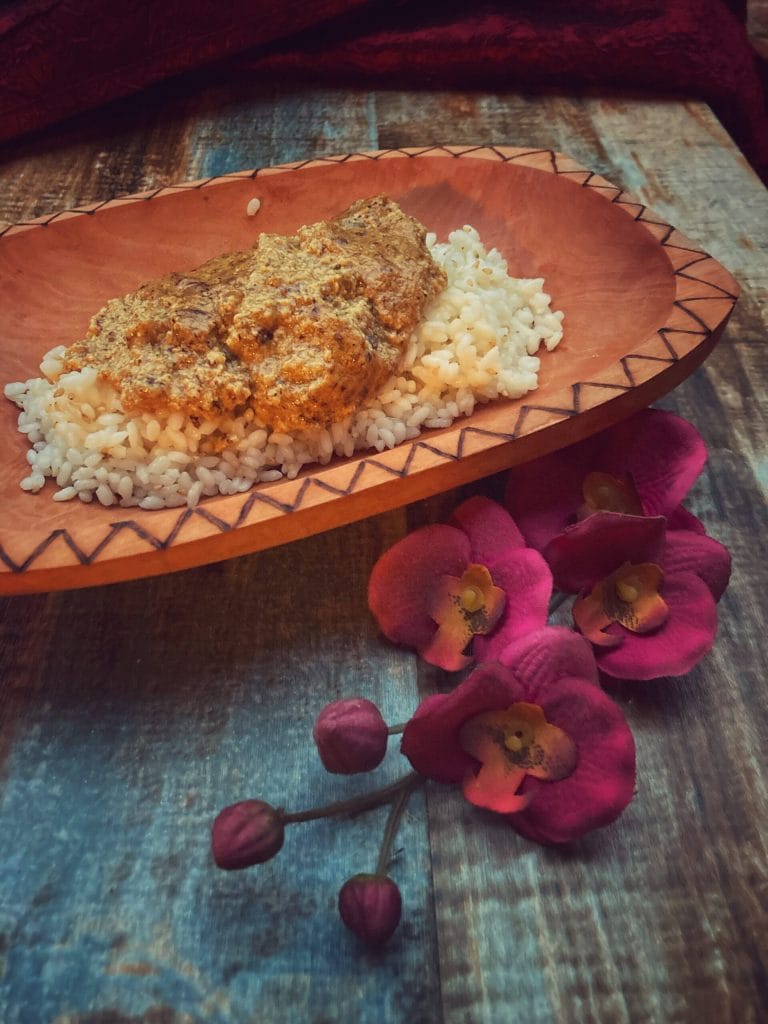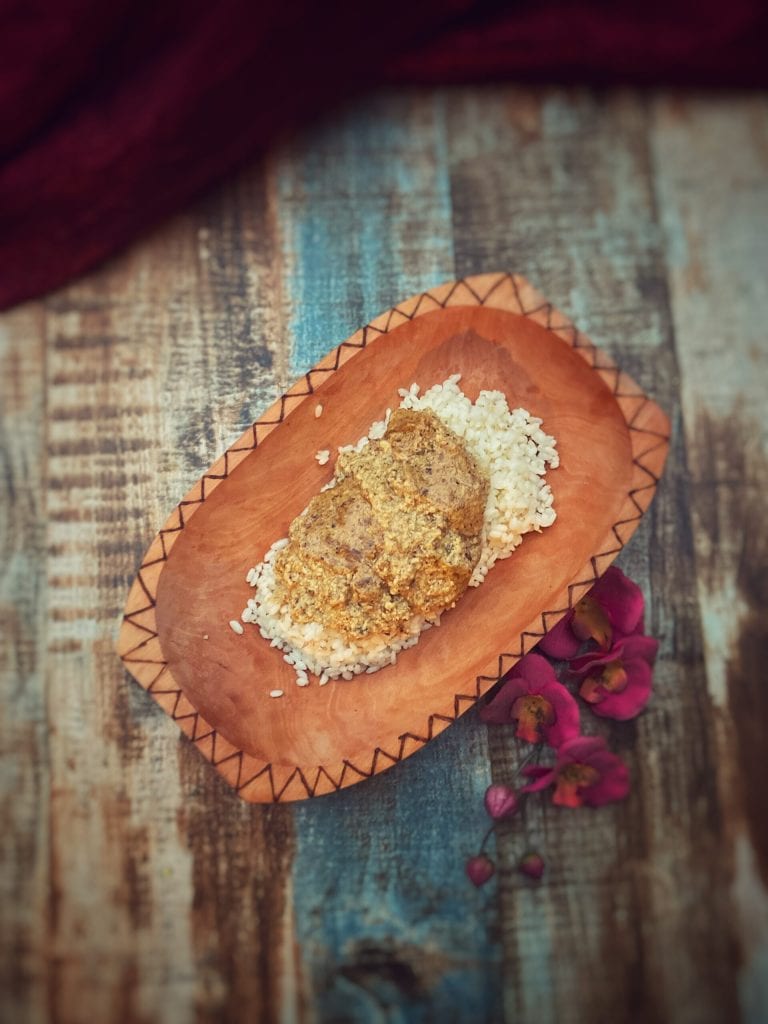The Khao niao sangkhaya is sticky rice (known as sticky rice in English) with Thai coconut custard (sangkhaya) with coconut.
It can be prepared according to different recipes and tastes, depending on specific cultures.
In Thailand, the dish was influenced by Portuguese cuisine during the Ayutthaya period (1350–1767).
The most common ingredients are sticky rice, coconut milk, salt, palm sugar, and coconut custard: the sangkhaya (สังขยาฟักทอง) .
Based on coconut cream, eggs, and sugar (I used coconut sugar) it is cooked alone or inside a hollowed-out kabocha squash, often colored with pandan leaves.
It is served warm or at room temperature, sometimes accompanied by bread.
The dessert is found not only in Thailand but also in other Southeast Asian countries, such as Indonesia, Malaysia, Singapore, and the Philippines.

- Difficulty: Easy
- Cost: Economical
- Rest time: 12 Hours
- Preparation time: 15 Minutes
- Portions: 6 people
- Cooking methods: Stove
- Cuisine: Thai
Ingredients for Khao niao sangkhaya:
- 1 1/2 cups Thai glutinous rice*
- 4 egg yolks
- 3 tbsps coconut sugar (or sugar)
- 1 3/4 cups coconut milk
- 3 tbsps cornstarch
Steps
Prepare the khao niao (sticky rice), the glutinous rice.
Place the rice in a large bowl.
Fill with cold water and move the rice several times with your hand to release the starch.
When the water becomes cloudy, drain the rice and sieve it.
Repeat the process several times until the water is clear.
Cover the rice with water and leave to soak at room temperature for at least 6 hours and up to 12 hours.
Fill a large saucepan with water and bring to a boil.
Drain the rice in the sieve and steam for 15 minutes (add more water to the pot if necessary and return to boil).
Uncover and turn the rice into large pieces with a heat-resistant rubber spatula.
Cover and continue to cook until the rice is translucent and tender, about another 15 minutes.
Prepare the sangkhaya:
beat the yolks, add the sugar, coconut milk, and cornstarch.
Bring to a boil, then turn off.
Transfer the rice to a bowl and serve over the sangkhaya.
You can decide whether to serve warm or at room temperature.

*Glutinous rice:
Glutinous rice is distinguished from other types of rice by the absence (or presence in negligible quantities) of amylose and high amounts of amylopectin (the two components of starch). Amylopectin is responsible for the sticky quality.
Once the grain is processed, elongated, it is white and completely opaque, unlike non-glutinous rice varieties, which are somewhat translucent when raw.
It is a type of rice mainly cultivated in South Asia: Japan, where it is called waxy, Korea, China, Philippines, Thailand, Laos, Indonesia, and Vietnam, also known as sticky rice, sweet rice, waxy rice, botan rice, biroin chal, mochi rice, and pearl rice.
If you can’t find glutinous or waxy rice, you can alternatively use kome rice, the one used for sushi.

